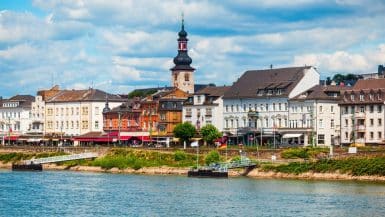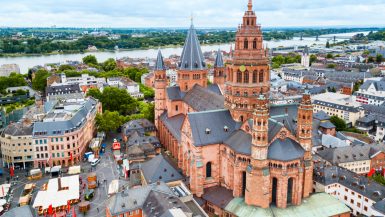The beautiful state of Hesse is located in the heart of Germany and offers numerous sights, culinary delights, art, culture and history but also a lot of nature. Holidays in Hesse promise a varied time. Here you can go hiking, do water sports, indulge in wellness, plan city tours, visit small half-timbered towns, visit various museums, shop, eat and drink well and much more.
Welcome to Hesse’s four largest cities
Frankfurt/Main

Frankfurt, the largest city in the state of Hesse, is known for its skyline. Again and again, however, visitors are surprised by the beauty of the historic old town on the Römerberg. In addition to the numerous half-timbered buildings, the cathedral – coronation site of German emperors – the town hall – of the Romans – and of course the many different museums are worth seeing in Goethe’s birthplace. In recent years, the banks of the Main have been transformed into an oasis of well-being.
The typical Äppelwoi pubs – mainly found in Sachsenhausen – are very popular, as is a city tour on the Äppelwoi Express.
Wiesbaden
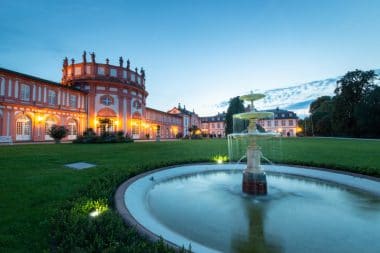
Wiesbaden is the second largest city in Hesse and, with its 15 mineral and thermal springs, is considered one of the oldest spas in Europe. Worth seeing are the Kurhaus and the Kurpark, the city centre with its historic buildings and of course the city castle. Almost everything here in the Hessian state capital, which is located on the Rhine, revolves around wine.
Kassel
The city of Kassel , located in the north of Hesse, is best known as a Documenta city. Even from afar, you can see the copper Hercules enthroned above the city in the Wilhelmshöhe mountain park. Another attraction is the Orangery in the Karlsaue city park.
Everywhere you can find traces of the fairy tale writers Grimm, who spent part of their early youth here.
Darmstadt
In Darmstadt, a lot revolves around art and culture. A visit to the Universalmuseum, the Hessian State Museum, where numerous exhibits by the well-known artist Joseph Beuys can be seen, among other things, is a must. The ESOC – European Space Operation Centre – is also located in the city, where you can be carried away into the fantastic world of satellites and space.
Archaeological finds can be admired in the nearby Messel pit. Here the visitor can play archaeologist himself.
Hesse & its half-timbered buildings
Typical for Hesse are the numerous, often well-restored half-timbered buildings. They can be found in idyllic villages, but also in the narrow streets of numerous old towns. There is an extraordinary amount of half-timbered houses in the Vogelsberg, the largest contiguous volcanic area in Central Europe.
The old towns of Alsfeld, Limburg, Marburg and the Goethe and Optics city of Wetzlar impress with beautiful half-timbered buildings. In the Rheingau, the sparkling wine and rose town of Eltville scores in this respect, and in the Taunus, the idyllic old town of Idstein.
Palaces, Castles & Parks

The fairytale land of the Brothers Grimm also has numerous castles, of course. Many of them are surrounded by a large park and are popular excursion destinations.
In the north, near Kassel, is the well-known Wilhelmshöhe Palace in the mountain park of the same name. It houses a large museum. A true fairytale castle is Braunfels Castle. And if you want to get a little scared, visit Frankenstein Castle in the Odenwald. The list of castles and palaces could go on for a long time.
A very special park is the Palmengarten, in the middle of the city of Frankfurt. Here you can find palm trees that are over 100 years old, but also other exotic and native plants.
Hesse’s museum landscape
There are well over 300 museums in Hesse, many of which can be found in Frankfurt alone. Almost every community also has its local history museums, where interesting facts about Hessian history can be learned.
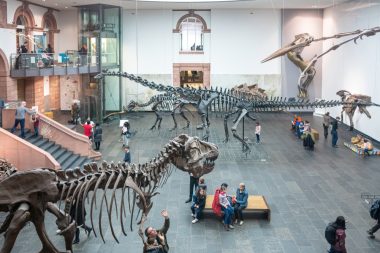
Among the most famous art museums are the Schirn and the Städel in Frankfurt as well as the museum in Schloss Wilhelmshöhe in Kassel. By the way, the world-famous Documenta takes place every five years at various locations in the city of Kassel. Families with children like to visit the Senckenberg Museum in Frankfurt with gigantic dinosaurs as an attraction. The little visitors also feel particularly at home in the Children’s Academy in Fulda. Here you can take part and discover the world of art, culture, science and technology. The Mathematikum in Giessen also invites you to participate. The fact that mathematics can be fun is something every guest learns here through games and experiments. The Bad Hersfeld “Wortreich”, on the other hand, is a hands-on museum based on the humanities.
You can follow in the footsteps of the Romans in the Roman fort of Saalburg near Bad Homburg. In the nearby Hessenpark there are numerous original buildings of Hessian history and you can learn a lot about old professions.
Those interested in technology will enjoy the Konrad Zuse Museum in Hünfeld, which commemorates the forefather of the computer, or in Wetzlar at the Leica Gallery, which immerses itself in the world of photography.
Goethe meets Hesse’s visitors in many places, for example in Wetzlar, where he found his lover and his work “The Sorrows of Young Werther” was written, or in Frankfurt, where he was born. You can also walk in the footsteps of the two Grimm brothers in some places in Hesse. In Steinau, for example, their former home was turned into a museum dedicated to them.
This is how Hesse eats
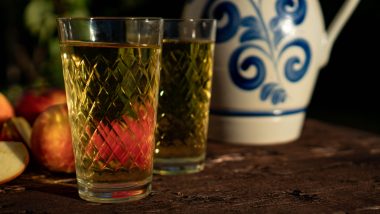
In addition to international cuisine, Hesse naturally offers a lot of regional dishes. The most typical drink is the “Äppelwoi”, in German apple wine. It originally comes from the Frankfurt area, where it is served in numerous restaurants. It is drunk pure, sweetly spritzed (with lemonade) or sour spritzed (with water). The “Handkäs mit Musik” tastes good with the Äppelwoi, a dish made of hand cheese, pickled in vinegar, cider and oil as well as with lots of onions. Another speciality of Frankfurt is the Green Sauce – “Grie Soß” in Frankfurt – which consists of seven finely chopped herbs and is traditionally eaten with boiled potatoes and hard-boiled eggs. This, by the way, was Goethe’s favourite dish. The Frankfurt sausages are known far beyond the borders.
But not only Frankfurt has a lot to offer in terms of cuisine. Kassel, for example, scores with the “Ahle Worscht”, a long-matured long-life sausage or raw sausage made according to an old recipe.
Potatoes are mainly eaten as side dishes in this country.
In addition to the local beer from various small breweries, the Hessians – especially in the south – drink the red Riesling from Rheinhessen.
Hesse knows how to celebrate
Cultural, culinary and traditional events take place almost all year round, inviting you to marvel and participate. One of the most interesting events is the traditional Museum Embankment Festival in Frankfurt on the last weekend in August. Visitors can experience the art and culture festival along the banks of the Main at night and visit the museums.
More than 600 wines and sparkling wines from the Rheingau are offered for sale in late summer at the Rheingau Wine Market in Frankfurt’s “Fressgass”. The Rheingau Wine Week also takes place in Wiesbaden every year in August.
The Christmas markets in various villages are particularly beautiful. For example, places such as Alsfeld, Marburg, Limburg, Michelstadt or Bad Sooden-Allendorf offer Christmas delicacies, handicrafts and other things in front of the impressive backdrop of beautiful half-timbered houses.
Let your mind wander…
A total of 30 spas and spas invite you to unwind and experience pure wellness. The popular Bad Karlshafen is located in the Weser Uplands, the spas of Bad Schwalbach and Bad Soden/Taunus in the Taunus and the mineral and moor spa Bad Salzschlirf, idyllically located between the Rhön and Vogelsberg. Bad Nauheim, where the Art Nouveau Sprudelhof can be found, has already hosted numerous celebrities such as Empress Sissi and Richard Strauss. Other well-known health resorts and spas are Bad Vilbel, Bad Homburg or Bad Wildungen.
Get out into nature!
Hesse invites you to various outdoor activities such as hiking, cycling or canoeing, because large parts are natural landscapes. And they show very complex: There are fantastic volcanic landscapes, peaceful orchards, picturesque low mountain ranges, dreamy lakes and river landscapes and, of course, a lot of forest.
Among the most interesting landscapes are the UNESCO World Heritage National Park & Nature Park Kellerwald-Edersee, the Vogelsberg volcanic region, the Reinhardswald, the Rhön Biosphere Reserve and the Hessian Rhön Nature Park with its moors, the Bergstraße, the Frau-Holle-Land Geo-Nature Park, the Taunus and the Spessart.
A particularly beautiful region is the Rheingau with the eponymous Rhine, on whose banks you can take a wonderful stroll. Vineyards nestling against the gentle hills, which show a colourful picture, especially in autumn, as well as numerous ostrich farms, idyllic places such as Eltville and the filming location of the well-known film adaptation of the novel “In the Name of the Rose” – Eberbach Monastery – invite you as well as the well-developed cycling and hiking trails.

However, Hesse is also a state with numerous bodies of water where you can spend fishing and beach holidays as well as indulge in water sports. The largest lake is the Edersee in northern Hesse. The Twistesee and Diemelsee lakes are in its vicinity. The Borkener See in the Schwalm-Eder district, the Aartalsee in the Lahn-Dill district and numerous quarry ponds are true leisure paradises. The Lahn with its beautiful river landscape is very popular with canoeists. But the Main, Neckar, Fulda and, of course, the Rhine also attract numerous visitors to their banks.
What many people don’t know is that winter sports can be actively practiced in Hesse on over 54 kilometres of slopes with around 70 ski lifts.
The best known and largest ski area is the Willingen – Ettelsberg ski area in the Sauerland, where the fourth largest ski jump in the world – the Mühlenkopfschanze – is located. There are other winter sports opportunities on the Wasserkuppe in the Hessian Rhön, on the Hoher Meißner near Eschwege, on the Hoherodskopf in the Vogelsberg, in the Westerwald or in the Hochtaunuskreis – for example around the Feldberg.



